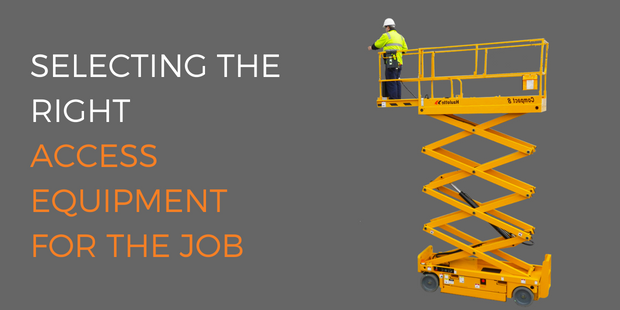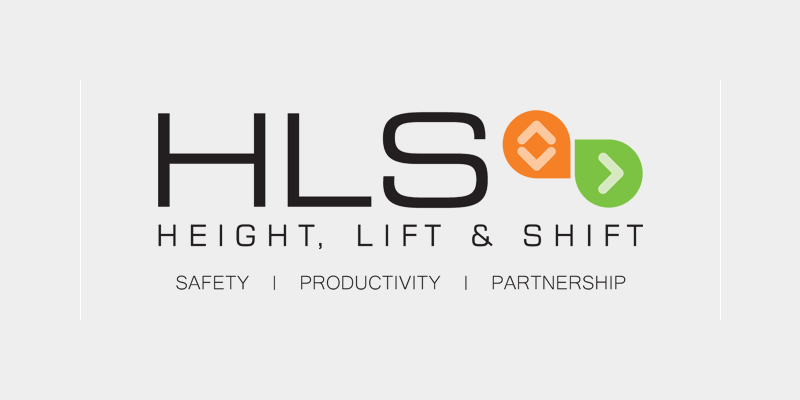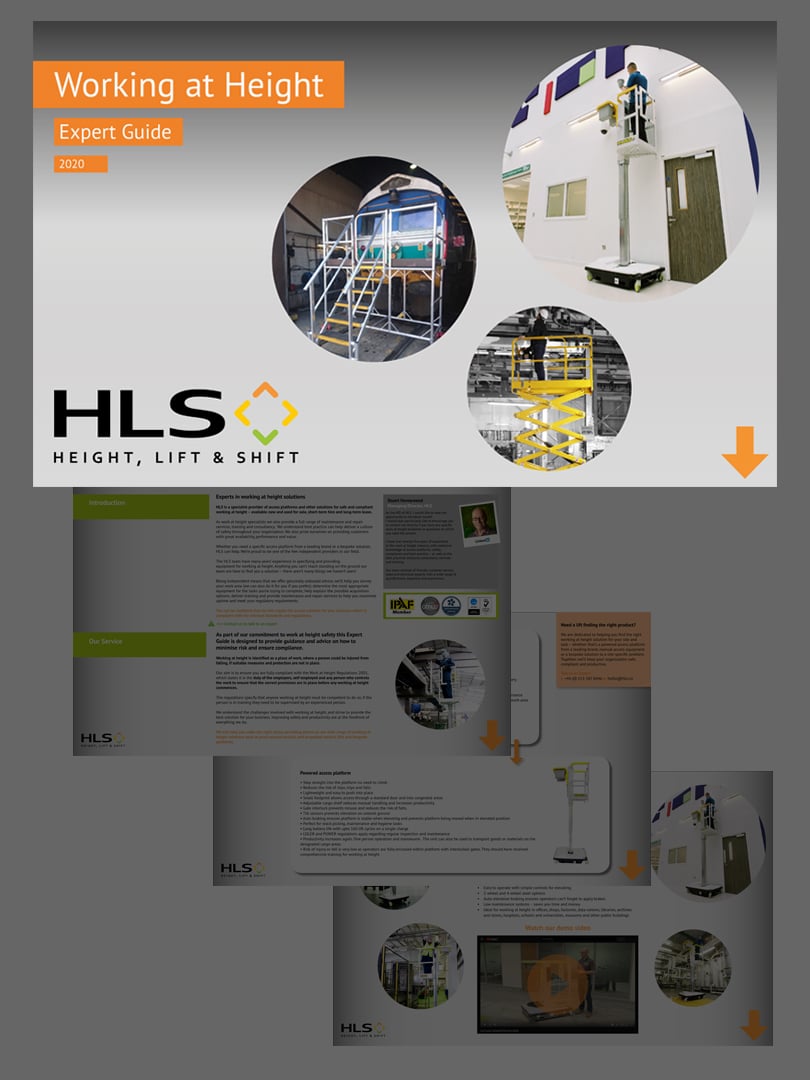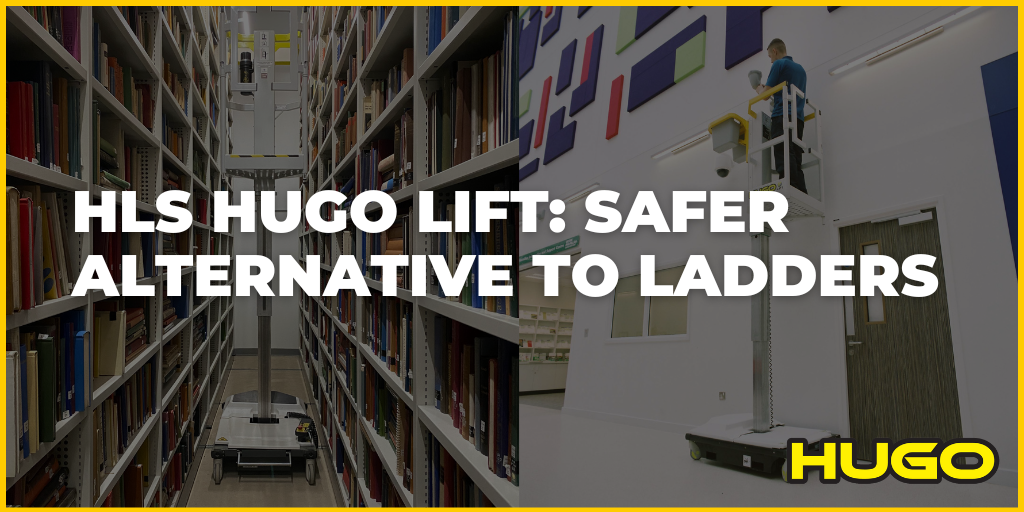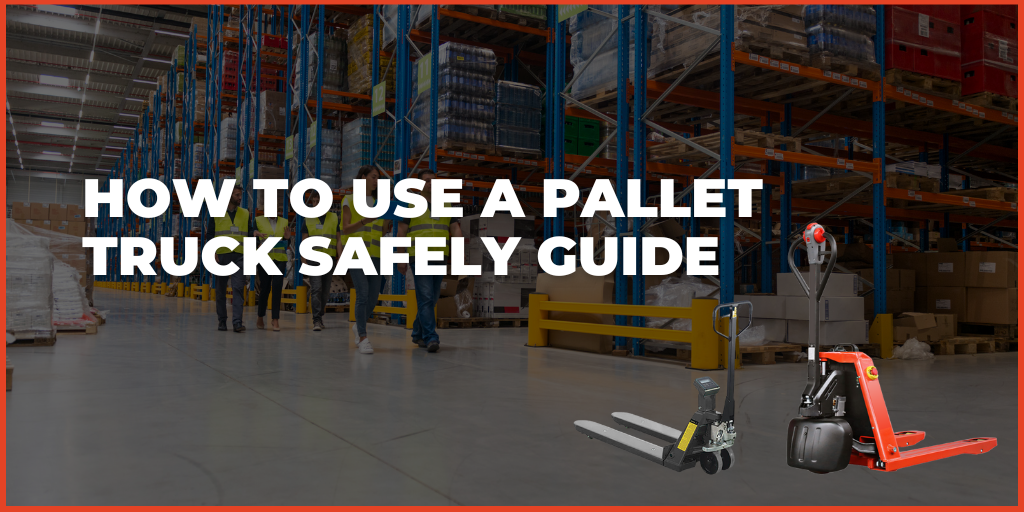One of the most important aspects of the Work at Height regulations is selecting the right equipment that is most appropriate for the work being carried out. Very often this is done by a competent person within the organisation who has the requisite knowledge to decide what is best for the particular task.
Within this blog we will look at the key types of equipment that can be used when a ladder or step ladder is not appropriate.
Mobile (self-propelled) boom lifts
Commonly referred to as cherry pickers, for reaching out as well as up. Cherry pickers are ideal if you need to clear obstacles or access awkward areas, and most models can be driven while at height to avoid time lost raising, lowering and repositioning the platform.
Scissor lifts are working at height solutions that offer a stable platform, simplicity and ease of use for straight up access with a small outreach capability. Scissor lifts are ideal for low-level and above with simple to use controls. Most smaller scissor lifts will fit through a standard doorway, larger machines often have folding guardrails to allow for passing through a double doorway. All-terrain models tend to be for outdoor use.
Self-propelled vertical lifts are also frequently referred to as mast lifts, vertical lifts or personnel lifts. They provide straight up reach for working directly overhead or alongside the platform. Vertical lifts are ideal if you have floor loading restrictions and need a lightweight machine that can reach from 2 to 9m. Self-propelled vertical lifts can also be driven while at height to avoid time lost raising and lowering the platform.
Push-around vertical lifts (also referred to as PAV’s) offer supreme simplicity and ease of use for straight up access. Push-arounds are ideal if you need something simple, if you’re restricted by narrow doorways or floor loadings, if you’re operating the equipment in a public access environment, a confined space or you’re just looking for a safer alternative to steps and ladders.
Tracked boom lifts (also referred to as spider lifts) are ideal in a number of situations. They are perfect for working indoors and outdoors on sloping or uneven ground, in atriums and other spaces where an operative needs very high reach but from a lightweight machine that won’t damage finished flooring, or crack tiles.
They are mounted on caterpillar tracks which enables them to travel over uneven ground, and ensures the weight of the machine is spread over a larger area. They use outriggers/stabilisers to level on sloping or uneven ground, before the platform is raised. Offering working heights of between 11m and 50m, these machines offer both up and over outreach.
They usually have compact dimensions to enable them to travel easily through standard size doorways.
Bespoke access platforms are a solution to working at height where standard equipment is not suitable. Examples of environments in which bespoke platforms are helpful are in manufacturing where equipment has to fit around fixed production equipment, aviation, rail or in any other challenging environments where traditional equipment isn’t suitable.
In Summary
There are a number of solutions used to work at height and the important thing is to choose equipment which is most appropriate for the task at hand. If you do not have a competent person within your organisation who can make this assessment or you would simply like some expert advice, please do not hesitate to contact us at HLS.
